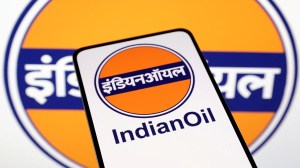India continues to be a major burden of non-communicable diseases like cardiovascular ailments. Amidst the rise in cardiovascular conditions in the country, the American Heart Journal reported a 13 percent increase in sudden cardiac arrest in India among those aged mid-30s to mid-40s.
Studies suggest CVDs such as ischaemic heart disease and cerebrovascular such as stroke account for 17.7 million deaths and are the leading cause. Additionally, Indians are known to have the highest coronary artery disease (CAD) rates, and the conventional risk factors fail to explain this increased risk.
In an interview with Financial Express.com, Ajay Singh Chauhan, General Manager – India, SEA, HK, Taiwan and Korea, Cardiac Rhythm Management, Abbott, talked about the current scenario of cardiac health burden in India, role of technology in cardiac care, Abbott’s plan, among others. Excerpts.
What is the status of cardiac health in India? What are some of the key issues?
Cardiovascular conditions are on the rise in the country. The American Heart Journal has reported a 13% increase in sudden cardiac arrest in India among those aged mid-30s to mid-40s. The incidence of cardiac arrest among youngsters is rising due to changing lifestyles, diabetes, stress, hypertension, smoking, and other factors.
It’s important to increase awareness about heart disease and its risk factors amongst the public. People need to be educated about the importance of maintaining a healthy lifestyle, including regular physical activity, a balanced diet, and avoiding tobacco and excessive alcohol consumption. Today there are advances in therapy development that have opened new paths to treatment for more patients battling cardiovascular disease.
Understanding the underlying causes of cardiac issues, especially amongst the younger generation, can help identify effective interventions. All stakeholders in the healthcare delivery system can play a crucial role by focusing on preventive measures such as screening programs, early diagnosis, and treatment of heart disease. This will certainly go a long way to improving the health of the population.
What has been the role of Abbott in this segment? What are your upcoming business plans in this area?
We’re committed to expanding the boundaries of cardiovascular innovation and offer comprehensive solutions across the patient’s healthcare journey.
With advances in technology that help solve the root problem and reduce the need for invasive open-heart surgery, doctors and patients can better manage their conditions in ways that fit seamlessly into their lives.
We’ve helped many people avoid open-heart surgery through some of the smallest, most advanced devices in the market that are implanted without major and invasive surgery. Through new digital health solutions, we are helping people stay connected with their doctors. This enables better personalized care experiences and doctors can make faster adjustments to their patient’s therapy needs.
We’re constantly developing new technologies to add to our portfolio of life-changing and life-saving solutions. From stents and heart valves to technologies that restore blood flow, keep hearts beating in rhythm, we are delivering solutions across the spectrum of care. We will continue to bring technologies into the country that will help doctors with the best outcomes for their patients.
What are the challenges that heart patients experience with respect to treatment and management in India? What needs to be done to improve this?
The challenges heart patients face in India, concerning their treatment and management, are multifaceted. These encompass inconsistencies in patient care delivery, failure in early diagnosis due to limited access to advanced diagnostic technologies, and significant issues related to health equity, especially for underserved communities.
42% of Indian patients dealing with coronary artery disease (CAD) or Peripheral Artery Disease (PAD) express the challenge of “confusion about what I was supposed to do next” as a significant barrier to achieving early and accurate diagnosis. Forty per cent of Indian physicians feel that a ‘lack of standardized approach for diagnosis CAD/PAD’ is a key barrier to an accurate diagnosis.
These figures solidify the need for physicians to leverage innovative technologies to improve the ability to make and communicate a diagnosis as early as possible in the patient’s journey.
Furthermore, geographical restraints, socioeconomic status, age, and gender within underserved communities significantly affect patients’ access to quality care, thereby exacerbating the health disparities.
The utilization of telemedicine services and remote patient monitoring technologies can significantly improve access to care, particularly for patients in remote or underserved areas.
To improve the overall cardiovascular infrastructure of India, we need to design and include innovative technologies, foster a culture of greater collaboration, and implement uniform diagnosis and screening protocols to ensure that many more people can continue to benefit across the continuum of care. Innovation needs people, processes, and policies to work together for optimum patient outcomes.
What can be the role of technological advancements in improving the deteriorating heart health of India?
Technology can bridge the gap in access to care, symptom understanding, and timely diagnosis.
Advanced technologies like AI can benefit primary care physicians and specialists by optimizing diagnosis, identifying patient symptoms previously undetected or passed over, and improving the vascular patient experience. In fact, 43% of Indian patients acknowledged the value of artificial intelligence to help diagnose CAD/PAD earlier.
As an example, our latest imaging software and workflow, Ultreon, helps guide and optimize stenting decisions, combining OCT (optical coherence tomography) with artificial intelligence. It’s a tool that really distils down what are the important things about a coronary intervention and allows a physician to do it easily.
Today, there’s a deeper level to smart healthcare technology that’s been transforming care: device-to-device compatibility — the ability to sync and send information from one device, such as your glucose or heart monitor, to your smartwatch or smartphone. Even the newest cardiovascular tech is being designed with compatibility in mind. This can help give people more confidence and freedom to go about their daily lives — and give doctors and other providers more real-time data to manage care effectively.
Connected devices such as wearables and implantable sensors can also be used to monitor patients remotely. This data shows health indicators can be used to identify early signs of complications, adjust treatment plans, and accordingly improve patient outcomes. Regulated apps can assist in monitoring disease progression, sending patients reminders on medicine schedules, and facilitating seamless communication between doctors and patients. Technology can also optimize the patient’s experience by setting industry-wide standards in diagnostic technologies. This includes tools, processes, and training to enable physicians to make faster, more accurate individual diagnoses.
What are Abbott’s upcoming plans for new-age technological advancements in India?
We are actively involved in the development and manufacture of implantable medical devices for a wide range of health conditions. Our aim is to give physicians options, especially for complex cardiovascular conditions. For example, for people with hearts beating too fast or too slow, our pacemakers and ICDs can restore quality of life and manage symptoms – even remotely for some patients.
We’re focused on innovating to improve patients’ safety, comfort, and quality of life and have developed several ICD technologies to meet their needs. These elevate the standard of patient care through new algorithms and technology intended to improve patient safety and therapy assurance.
We have a variety of CRT and CRT-D (cardiac resynchronization therapy defibrillator) tools to tailor treatment for each patient. These products can help physicians make a powerful difference in heart failure patients’ lives and help them be more engaged with their care.
The COVID-19 pandemic forced each of us to adapt to a new normal while much of the world went remote. Health systems were no different. The healthcare ecosystem adapted to remote care in all aspects of functioning to provide optimal care to patients while keeping them safe at home. In line with this, the pandemic also brought about a significant change in how cardiac care was provided. It reinforced the vulnerability of patients with cardiovascular conditions – including fewer interactions with doctors. As a result, what used to be considered optional has now become a necessity.
What the pandemic has made clear to us is the future of healthcare lies in the incredible power of technology. For people with complex heart conditions, advancements in technology, emerging trends, and digitization have led to the development of remote patient monitoring systems (RPMs) in cardiac care. With connected technologies, care can be effectively delivered outside hospitals and doctors’ offices, and further eliminates some barriers to people who live in locations and have circumstances where healthcare isn’t as readily accessible. What was a shift in care due to COVID, is here to stay.








